Here is one possible solution using R and ggplot2.
Your data, ready to paste into R console:
dat = structure(list(date = structure(c(15541, 15541, 15541, 15541,
15541, 15541, 15541, 15541, 15541, 15541, 15541, 15541, 15541,
15541, 15541, 15541, 15541, 15542, 15542, 15542, 15542, 15542,
15542, 15542, 15542, 15542, 15542, 15542, 15542, 15542, 15542,
15542, 15543, 15543, 15543, 15543, 15543, 15543, 15543, 15543,
15543, 15543, 15543, 15543, 15543, 15543, 15543, 15543, 15543,
15543, 15543, 15544, 15544, 15544, 15544, 15544, 15544, 15544,
15544, 15544, 15544, 15544, 15544, 15544, 15544, 15544, 15544,
15544, 15544, 15544, 15544, 15544, 15545, 15545, 15545, 15545,
15545, 15545, 15545, 15545, 15545, 15545, 15545, 15545, 15545,
15545, 15545, 15545, 15545, 15546, 15546, 15546, 15546, 15546,
15546, 15546, 15546, 15546, 15546, 15546, 15546, 15546, 15546,
15546, 15546, 15546, 15547, 15547, 15547, 15547, 15547, 15547,
15547, 15547, 15547, 15547, 15547, 15547, 15547, 15547, 15547,
15547, 15547, 15547, 15547), class = "Date"), bucket = c(800L,
900L, 1000L, 1100L, 1200L, 1300L, 1400L, 1500L, 1600L, 1700L,
1800L, 1900L, 2000L, 2100L, 2200L, 2300L, 2400L, 800L, 900L,
1000L, 1100L, 1200L, 1300L, 1400L, 1500L, 1600L, 1700L, 1800L,
1900L, 2000L, 2100L, 2200L, 900L, 1000L, 1100L, 1200L, 1300L,
1400L, 1500L, 1600L, 1700L, 1800L, 1900L, 2000L, 2100L, 2200L,
2300L, 2400L, 2500L, 2600L, 2800L, 800L, 900L, 1000L, 1100L,
1200L, 1300L, 1400L, 1500L, 1600L, 1700L, 1800L, 1900L, 2000L,
2100L, 2200L, 2300L, 2400L, 2500L, 2600L, 2700L, 2800L, 800L,
900L, 1000L, 1100L, 1200L, 1300L, 1400L, 1500L, 1600L, 1700L,
1800L, 1900L, 2000L, 2100L, 2200L, 2300L, 2400L, 800L, 900L,
1000L, 1100L, 1200L, 1300L, 1400L, 1500L, 1600L, 1700L, 1800L,
1900L, 2000L, 2100L, 2200L, 2300L, 2400L, 1300L, 1400L, 1500L,
1600L, 1700L, 1800L, 1900L, 2000L, 2100L, 2200L, 2300L, 2400L,
2500L, 2600L, 2700L, 2800L, 2900L, 3000L, 3200L), cnt = c(119L,
123L, 173L, 226L, 284L, 257L, 268L, 244L, 191L, 204L, 187L, 177L,
164L, 125L, 140L, 109L, 103L, 123L, 165L, 237L, 278L, 338L, 306L,
316L, 269L, 271L, 241L, 188L, 174L, 158L, 153L, 132L, 154L, 241L,
246L, 300L, 305L, 301L, 292L, 253L, 251L, 214L, 189L, 179L, 159L,
161L, 144L, 139L, 132L, 136L, 105L, 120L, 156L, 209L, 267L, 299L,
316L, 318L, 307L, 295L, 273L, 283L, 229L, 192L, 193L, 170L, 164L,
154L, 138L, 101L, 115L, 103L, 105L, 156L, 220L, 255L, 308L, 338L,
318L, 255L, 278L, 260L, 235L, 230L, 185L, 145L, 147L, 157L, 109L,
104L, 191L, 201L, 238L, 223L, 229L, 286L, 256L, 240L, 233L, 202L,
180L, 184L, 161L, 125L, 110L, 101L, 132L, 117L, 124L, 154L, 167L,
137L, 169L, 175L, 168L, 188L, 137L, 173L, 164L, 167L, 115L, 116L,
118L, 125L, 104L)), .Names = c("date", "bucket", "cnt"),
class = "data.frame", row.names = c(NA, -125L))
Plotting code:
library(ggplot2)
plot_1 = ggplot(dat, aes(x=date, y=bucket, fill=cnt)) +
geom_tile() +
scale_fill_continuous(low="#F7FBFF", high="#2171B5") +
theme_bw()
ggsave("plot_1.png", plot_1, width=6, height=4)
 The plot might look better if you include rows for zero bucket values in your data. Then you could change
The plot might look better if you include rows for zero bucket values in your data. Then you could change low="#F7FBFF" to low="white".

 The plot might look better if you include rows for zero bucket values in your data. Then you could change
The plot might look better if you include rows for zero bucket values in your data. Then you could change